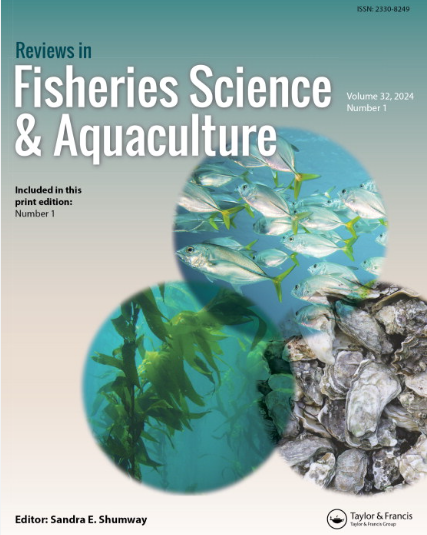The Utility of Discriminant Analysis to Determine the Geographic Origin of Commercially Important Seafood and Aquaculture Species: A Meta-Analysis
IF 6.4
1区 农林科学
Q1 FISHERIES
引用次数: 13
Abstract
Abstract Elemental profiling is a process where element concentrations in tissues are used to discern group membership between a priori groups, such as geographic location. The goal of this meta-analysis was to determine the effectiveness of elemental profiling to discern the geographic origin of seafood products when coupled with discriminant analyses. Cohen’s Kappa of discriminant analyses were calculated based on reported accuracies and calculated expected accuracies. A systemic literature review was conducted which generated 86 effect sizes from 43 studies. A random effects model was used to estimate Cohen’s Kappa, and the average effect observed was 0.83 (±0.036 95% CI) with a p value of <0.001. Moderators were investigated as part of this analysis. There were no significant differences based on production method or geographic range, but differences were observed based on the type of tissue analyzed and taxa groups. Meta-regression was used to analyze the relationship between the effect size and the number of elements included in each analysis or sample size. There was no observed relationship between Kappa and the number of elements analyzed or the sample size of the study. Based on these results, recommendations for future studies that utilize elemental profiling are included.判别分析在确定具有商业价值的海产品和水产养殖物种地理来源中的应用:Meta分析
摘要元素分析是一个使用组织中的元素浓度来辨别先验组之间的组成员关系的过程,例如地理位置。这项荟萃分析的目的是确定元素分析与判别分析相结合时辨别海鲜产品地理来源的有效性。Cohen的判别分析Kappa是根据报告的准确度和计算的预期准确度计算的。进行了一项系统的文献综述,从43项研究中产生了86个效应大小。使用随机效应模型来估计Cohen’s Kappa,观察到的平均效应为0.83(±0.036 95%CI),p值<0.001。作为分析的一部分,对主持人进行了调查。根据生产方法或地理范围没有显著差异,但根据分析的组织类型和分类群观察到差异。使用元回归分析效应大小与每次分析中包含的元素数量或样本量之间的关系。Kappa与分析的元素数量或研究的样本量之间没有观察到关系。基于这些结果,包括了对未来利用元素剖面进行研究的建议。
本文章由计算机程序翻译,如有差异,请以英文原文为准。
求助全文
约1分钟内获得全文
求助全文
来源期刊

Reviews in Fisheries Science & Aquaculture
FISHERIES-
CiteScore
25.20
自引率
0.90%
发文量
19
期刊介绍:
Reviews in Fisheries Science & Aquaculture provides an important forum for the publication of up-to-date reviews covering a broad range of subject areas including management, aquaculture, taxonomy, behavior, stock identification, genetics, nutrition, and physiology. Issues concerning finfish and aquatic invertebrates prized for their economic or recreational importance, their value as indicators of environmental health, or their natural beauty are addressed. An important resource that keeps you apprised of the latest changes in the field, each issue of Reviews in Fisheries Science & Aquaculture presents useful information to fisheries and aquaculture scientists in academia, state and federal natural resources agencies, and the private sector.
 求助内容:
求助内容: 应助结果提醒方式:
应助结果提醒方式:


